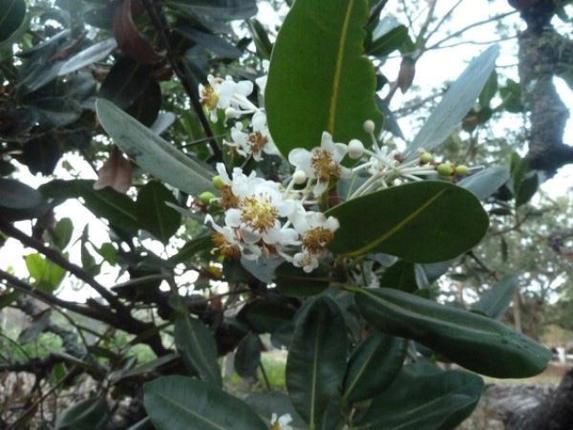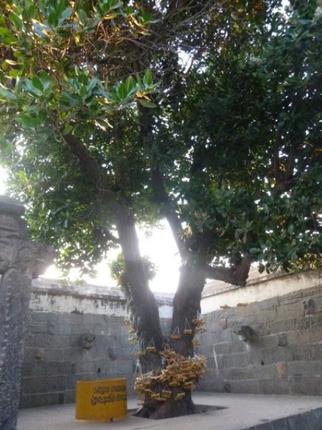
The magnificent punnai trees of the city have several tales to tell
“This is the punnai maram,” pointed out the elder person to the seven-year-old. “It will make your wish come true if you tie a thread around its branch.” We were at the Kapaleeswarar Temple in Mylapore, walking around the old tree next to a small shrine in a courtyard. “You see the figure of the peacock? That is goddess Parvathi worshipping Lord Shiva. Mylapore got its name from this legend — ‘myil’ (peacock) and ‘oor’ (place). The Shiva here is also known as ‘Punnaivananathar’ (lord of the punnai grove). Being the stalavriksha (tree attached to a Hindu temple), she guessed the tree must be as old as the temple itself.
Hymns by the Nayanmars have references to Kapaleeswarar temple, but place it on the seashore. The scholarly view is that the original temple was built on the shore, but was destroyed by the Portuguese, and that this one was built by the Vijayanagar kings in the 16th century. Add to it the fact that ‘Karpagambal’ (the presiding goddess) means ‘Goddess of the wish-yielding tree’, and the age of the punnai tree becomes anybody’s guess.
“It can be witness to surrounding history for more than a hundred years,” said Dr. TD Babu of Nizhal. While punnai is its Tamil name, botanists have named it Calophyllum inophyllum and its common English label is Alexandrian laurel, he said, adding that Punnai is our own coastal tree with a grey or black bark. It grows 12 to 14 metres high, has thick, dark leaves, each with a prominent mid-rib and parallel veins. It spreads by throwing out hard seeds. Its clustered flowers, blooming in winter, are white and fragrant. The punnai’s fruit is spherical with a smooth, greenish-yellow skin.
Some 40 km down ECR, at Thiruvidanthai, inside the compound of the Nithyakalyana Perumal Koil, is another magnificent punnai on a specially-erected platform. The Archaeological Survey of India, which maintains the temple, has put up epigraphical information to show the temple is more than a thousand years old. The priest said that three preceding generations in his family have talked about it. If not the tree itself, its significance goes back much further, or else why would the temple’s pillars have carvings of Krishna dancing on the punnai tree?

The punnai’s seeds are rich in oil (dilo), which was once used to light lamps and lanterns. Dilo oil is believed to cure rheumatism, bruises, ulcers, scabies, and was used as pain reliever for leprosy through intramuscular injection (Dastur 1962). The oil is used to make soap, the fruit yields commercially important gum. The bark has anti-microbial effect, so its decoction is used to wash painless ulcers. The juice is taken internally to stop internal/external bleeding. Snuff from the leaves is believed to relieve giddiness and headache. The leaf extract soothes sore eyes. The flowers are a cure for venereal diseases and nervous disorders. The wood was once used for railway sleepers and in ship-building
“Those who visit the Vaikuntavasa Perumal Temple at Koyembedu must stop to admire the lovely punnai tree there,” Babu said. He put its age at 80. “Trees get value-added as they grow old,” he added. “We must think of them as faunal biodiversity and do everything to preserve them.”
source: http://www.thehindu.com / The Hindu / Home> Features> MetroPlus / by Geeta Padmanabhan / Chennai – April 30th, 2014